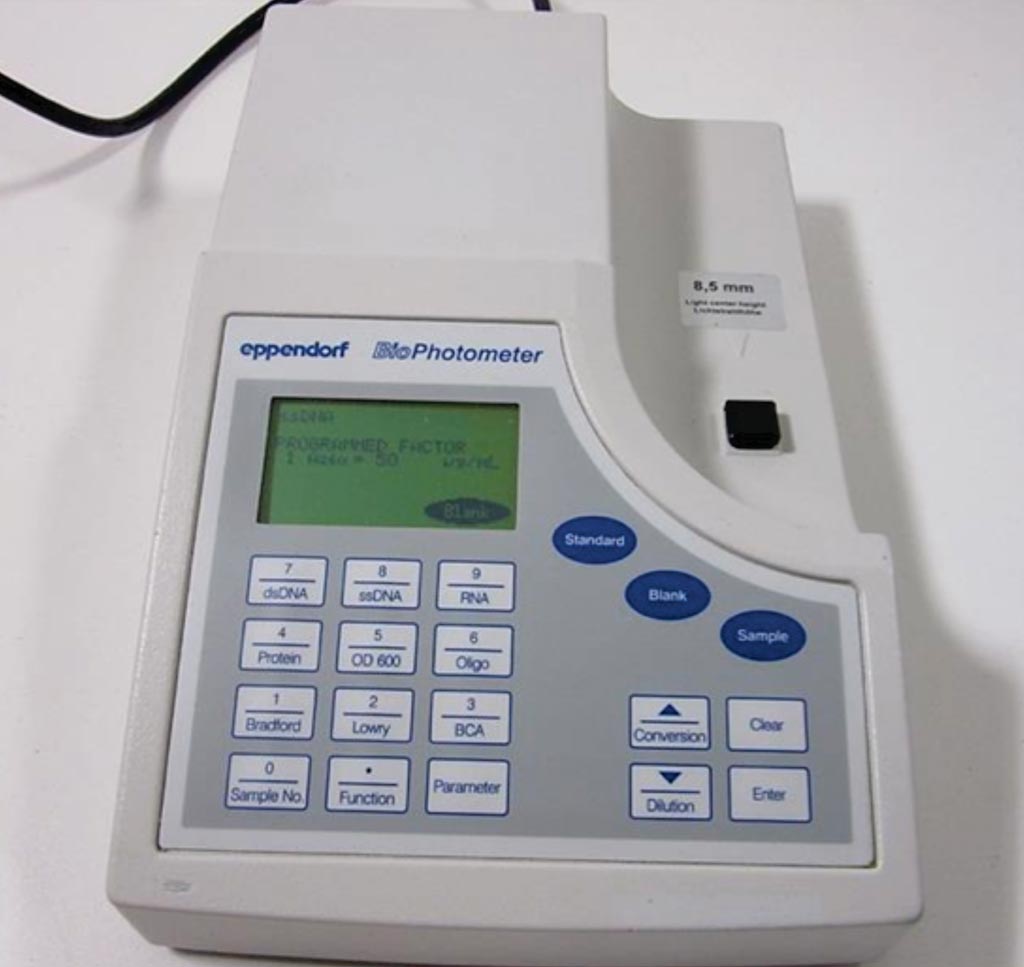PCR Kit Developed for Detection of Q-fever Pathogen
By LabMedica International staff writers
Posted on 17 Oct 2019
Coxiella burnetii is an obligate intracellular bacterium that causes Q fever in animals and humans. The infection results from inhalation of a spore-like small-cell variant, and from contact with the milk, urine, feces, vaginal mucus or semen of infected animals.Posted on 17 Oct 2019
Incubation period is usually two to three weeks. The most common manifestation is flu-like symptoms with abrupt onset of fever, malaise, profuse perspiration, severe headache, muscle pain, joint pain, loss of appetite, upper respiratory problems, dry cough, pleuritic pain, chills, confusion, and gastrointestinal symptoms, such as nausea, vomiting, and diarrhea. About half of infected individuals exhibit no symptoms.

Image: The BioPhotometer 6131 spectrophotometer/fluorometer (Photo courtesy of Eppendorf).
Virologists at the Institute of Laboratory Diagnostics and Veterinary and Sanitary Expertise (Kiev, Ukraine) developed a confirmatory polymerase chain reaction (PCR) for C. burnetii for diagnosis in Ukraine. The PCR assay targeted the outer membrane-associated gene com1 in C. burnetii. Oligonucleotide primers were selected that amplify a 689-bp DNA fragment of the com1 gene. The optimization of PCR amplification was accomplished by adjusting Mg2+ and dNTP concentrations in the PCR mixture, and testing different annealing temperatures.
Specificity of the designed primers was evaluated using a panel of DNA samples of various pathogens that were regarded as potentially present in the samples that would be tested. The specificity was evaluated using reference control DNA C. burnetii#5131 and C. burnetii Gritta strains. Concentration and purity of all DNA were evaluated using the spectrophotometer/fluorometer BioPhotometer 6131.
The assay proved highly sensitive and specific to C. burnetii DNA detection with a limit of detection (LOD) of 0.37 pg/μL. Reproducibility of the test was verified by comparing the PCR results with those of a different PCR protocol and qPCR. The method showed no cross-reactivity with genomic DNAs of eight pathogens. The authors concluded that the diagnostic kit Coxiella burnetii-PCR-TEST has high sensitivity and specificity can serve as a valid diagnostic tool for C. burnetii detection in biological samples. The study was published on September 19, 2019, in the journal Vector-Borne and Zoonotic Diseases.
Related Links:
Institute of Laboratory Diagnostics and Veterinary and Sanitary Expertise










 (3) (1).png)



